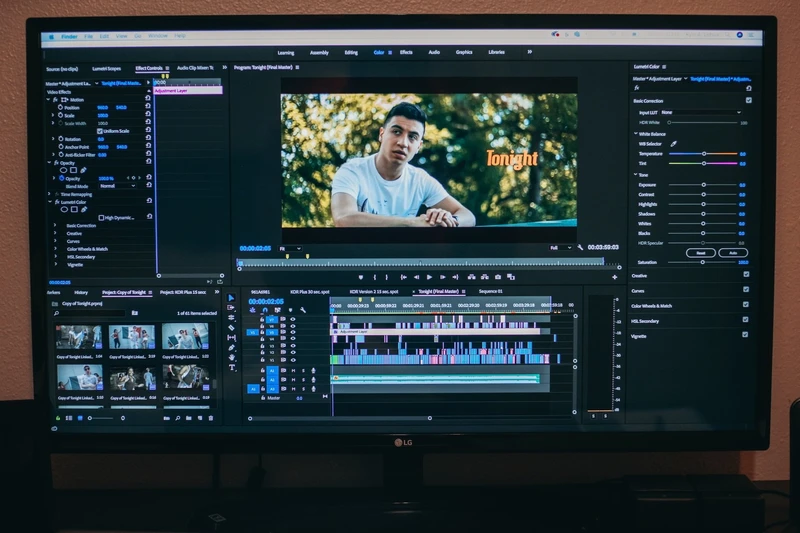Deepfake is a forged video or audio recording designed to resemble a real person. However, researchers warn that people cannot detect more than a quarter of speech samples created. artificial intelligence This is why there are growing concerns that criminals and fraudsters may use this technology to swindle money from people.
People do not recognize deepfakes very well.
For early synthetic speech, thousands of samples of a person’s voice may have been needed to create original audio. Currently, the latest algorithms can reproduce a person’s voice using just a three-second snippet of their conversation.
A team of London researchers used an algorithm to create 50 samples of deepfakes and presented them to 529 participants. The latter were able to identify the fake ones. language only about 73% of cases. The results only improved slightly as people underwent training on how to recognize aspects of deepfakes.

The author of the study, Kimberley May, says that this only confirms previous findings about the inability of humans to reliably detect fake speech, regardless of whether they have been trained to recognize artificial content. She also notes that relatively old algorithms were used in the experiment.
This raises the question of whether people will become even less capable of detecting deepfakes created by more advanced technologies now and in the future. For example, Apple recently announced software for the iPhone and iPad that allows users to create a copy of their voice in just 15 minutes of recording.
Between benefits and risks
As noted by the publication Daily Mail Documented cases of deepfake use by criminals include an incident in 2019, when the CEO of a British energy company was convinced to transfer a large sum of money to a fake supplier using a deepfake audio recording of his boss’s voice.
However, along with the growing fears about technology, it can also be beneficial. For example, for those whose speech may be limited, or for those who may lose their voice due to illness.
The senior author of the study, Professor Lewis Griffin, says that due to the complexities of AI technology and the open access to many of these tools, humanity stands on the brink of numerous advantages and risks. Therefore, it would be wise for governments and organizations to develop strategies to combat the misuse of these tools.
How to recognize a deepfake?
The deepfake technology, which is a form of AI, was developed in 2014. The system studies the target person through photographs and videos, allowing it to capture different angles and imitate their behavior and speech. However, there are certain distinguishing features between the real and the fake.
Unnatural eye movement
It’s difficult to replicate blinking in a way that looks natural. It’s also challenging to mimic the eye movements of a real person. Therefore, unnatural movements or their absence are serious warnings of a deepfake.
Unnatural facial expressions

When something looks off in a person’s facial expression, it may indicate a change occurring through the overlay of one image onto another.
Inconvenient placement of facial features
If someone’s face points in one direction and their nose in another, one should be skeptical about the authenticity of the video.
Lack of emotions
If someone’s face seems to lack the emotions that should correspond to what they are supposedly saying, it is referred to as “facial morphing” or image stitching.
Awkward body or posture and unnatural movements
Since deepfake technology typically focuses on facial features, it is easiest to notice when a person’s body shape looks unnatural or when the position of the head and body is inconsistent. Additionally, if the movements are abrupt and disjointed from one frame to another, it is a sign to suspect a deepfake.
Unnatural coloring, hair, and teeth
Abnormal skin tone, discoloration, strange lighting, and incorrect shadows are all signs of a deepfake. Fake images cannot create individual hair (curly or flowing). Additionally, algorithms are unable to generate individual teeth, so the absence of distinct outlines of individual teeth may be a sign of a deepfake.
Blur or shift
If the edges of the images are blurry or visual elements are misaligned (for example, where someone’s face and neck meet the body), it can be understood that this is a deepfake.
Intermittent noise or sound

Poor lip synchronization, robotic-sounding voices, strange pronunciation of words, digital background noise, or even a lack of sound – all of these can be signs of a deepfake.
Unnaturalness of the image during slow motion
If you slow down the video playback or zoom in on a screen larger than a smartphone, you can spot a deepfake. For example, enlarging the lips can help determine if they are actually speaking.
Reverse image search
Thanks to this, it is possible to detect similar videos on the internet, which will help determine whether an image, audio, or video has been altered in any way. This technology is not publicly available; however, investing in this tool could be beneficial.

